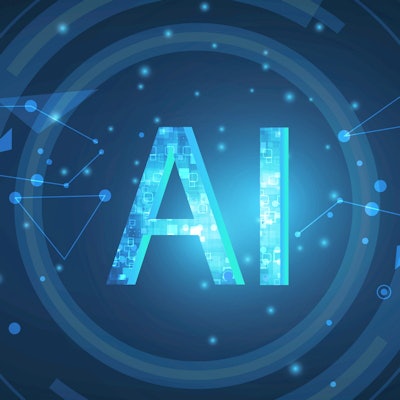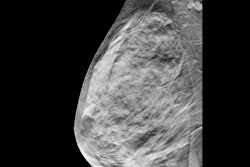
A meta-analysis encompassing over 1.1 million screening breast imaging exams has concluded that artificial intelligence (AI) software performs equally to or better than radiologists, according to research published May 23 in Radiology.
A team led by Dr. Jung Hyun Yoon, PhD, from Yonsei University in Seoul found that AI has slightly higher pooled areas under the curve (AUC) than radiologists when it comes to mammograms and DBT exams. However, it also cautioned that more DBT studies are needed to enable a meaningful evaluation.
"Standalone AI for screening digital mammography performed as well as or better than individual breast radiologists on average reader outcomes," Yoon and colleagues wrote. "[However], there was insufficient comparative evidence on AI for interpretation of DBT."
While AI systems have been developed and validated for use in breast imaging, the researchers noted that AI can only improve screening outcomes and workload reductions when the technology's performance is "sufficiently high." They suggested that critical evaluations are needed before AI can be implemented as a standalone method for interpreting mammograms.
Yoon and colleagues performed a systematic review and meta-analysis that evaluated the standalone performances of AI for interpreting digital mammography and DBT exams.
They included 16 studies published between 2017 and 2022 that contained 1,108,328 examinations in 497,091 women. The studies included six reader studies, seven historic cohort studies (retrospective interpretations in clinical practice) on digital mammography, and four studies on DBT.
The team found that when AUCs were pooled, standalone AI had a significant advantage in the reader studies, but not for the historic cohort studies. It also reported that AI showed significantly higher AUCs in the DBT studies.
| Pooled AUCs of AI, radiologists in breast imaging studies | |||
| Study type | Radiologists | AI | p-value |
| Reader | 0.81 | 0.87 | 0.002 |
| Historic cohort | 0.96 | 0.89 | 0.152 |
| DBT | 0.79 | 0.9 | < 0.001 |
Despite AI's significant advantage in the DBT studies, the researchers suggested that more studies are needed to fully understand the performances of AI and radiologists in this area. They noted that confidence intervals around the estimates in the DBT studies are wide.
The study authors wrote that future studies should focus on different implementation strategies and continuous quality control. They reasoned that these steps could make sure that retrospective results lead to improved cancer detection and optimization of screening programs in prospective research.
In an accompanying editorial, Dr. Anabel Scaranelo from the University of Toronto wrote that moderation is needed in using standalone AI in breast cancer screening. She added that breast imaging departments must balance the ability to reduce radiologist fatigue and burnout with "the threat of radiologists losing their jobs to powerful algorithms."
"We simply know nothing yet of how to achieve artificial superintelligence, a hypothetical stage of AI where the intelligence and capabilities of computers surpass those of human beings," she wrote. "Instead of being concerned with the right or wrong uses of AI tools, we should first evaluate whether the promises of AI are as innocuous as they seem."



















